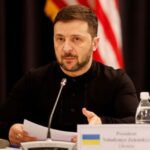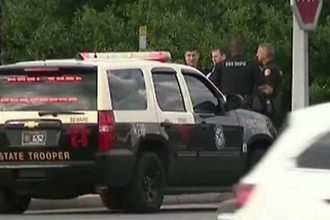The Los Angeles wildfires have brought unprecedented devastation to the region, with at least 25 lives lost, 16 missing, and thousands more displaced as containment struggles continue. As the situation continues to unfold, it’s clear that the true extent of the damage is still unknown. The question on everyone’s mind is: what’s being done to prevent such disasters in the future?
The combination of strong winds, dry conditions, and raging fires has created a perfect storm of destruction. The wildfires, which include the Palisades Fire, the Eaton Fire, and others, have burned over 62 square miles of land, forcing thousands of people to evacuate and destroying numerous structures.
Here is the breakdown of the destruction caused by the Palisades Fire and the Eaton Fire: The Palisades Fire has burned nearly 24,000 acres and is 11% contained, with at least 5,613 structures destroyed.
The Eaton Fire has burned over 14,100 acres and is 27% contained, with around 7,000 structures damaged or destroyed. The Hurst Fire near Sylmar has burned 799 acres and is 89% contained.
Speaking on NBC’s “Meet the Press” program, the governor of California, Gavin Newsom, said he expected the death toll to rise. California Governor Gavin Newsom said, and I quote: “I’ve got search and rescue teams out. We’ve got cadaver dogs out, and there’s likely to be a lot more.”
In the latest effort to curb the situation, Gavin Newsom announced on Sunday afternoon that he is deploying another 1,000 members of the California National Guard to Los Angeles County to help battle the raging wildfires, which will increase the number of state National Guard members on the ground to 2,500 personnel.
Governor Gavin Newsom has also signed an executive order to speed up rebuilding homes and businesses destroyed in the fires, suspending certain environmental regulations and permitting requirements.
However, despite all this effort, President-elect Donald Trump criticized local and state officials for their poor handling of the situation.
In a Truth Social media post, Trump said, and I quote: “The fires are still raging in L.A. The incompetent pols have no idea how to put them out. Thousands of magnificent houses are gone, and many more will soon be lost. There is death all over the place. They just can’t put out the fires. What’s wrong with them?”
The Los Angeles wildfires are a stark reminder of the urgent need for climate action. As the world continues to grapple with the challenges of climate change, it’s clear that we can’t afford to wait. The lives lost and communities destroyed are a tragic reminder of the devastating consequences of inaction.
As the situation unfolds, one thing is certain: the people of Los Angeles will come together to rebuild and recover. But it’s not just about rebuilding—it’s about building a better future. A future where wildfires are prevented, not just managed. A future where communities are protected, not just evacuated.
The road to recovery will be long and difficult, but it’s a journey that must be taken. The lives lost and communities destroyed will not be forgotten. Instead, they will serve as a catalyst for change, a reminder of the urgent need for action to prevent such tragedies in the future.















